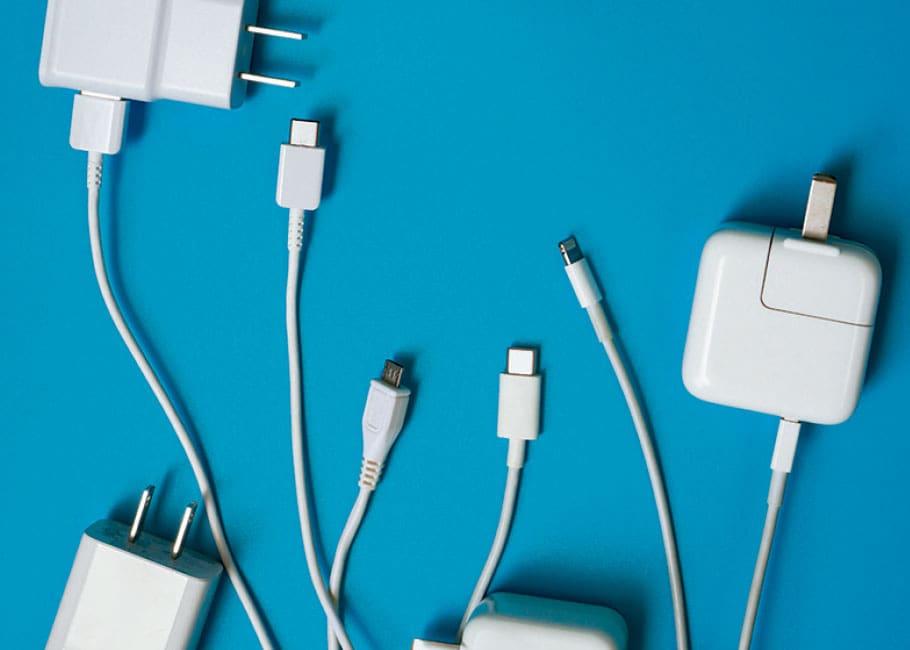Tech Connection

© CHALINEE / STOCK.ADOBE.COM
Power up
Tips to be sure that you have the right chargers for your devices
by ANDY PENFOLD
Keeping your devices juiced up used to be a simple affair—you simply plugged your laptop or phone into an electrical outlet using the cable and plug supplied in the box. But these days, devices don’t always come with chargers, as manufacturers seek to reduce their environmental impact through the reduction of plastic waste. And some companies say that most people already have several chargers. If they’re sold separately, you need to get the right one. Add to that the rise of fast charging and wireless charging, and keeping your battery level up can be confusing and complicated.
Here’s a look at today’s landscape, to help you buy the most efficient chargers for your devices.
Watts the matter?
Before you buy a charger, it’s important to know the power needs of the device you will be charging. Phones need between 18- and 120- watt chargers, though most will require between 20- and 30-watt chargers. Tablets tend to be similar, while laptop chargers will generally need to be at least 30 watts (more to be able to charge while you’re using it). This information is usually listed on a device’s specification sheet or in its manual.
Standards
You’ll also need to know the charging standard your device supports. Most will support the power delivery standard (usually marketed as PD). If a device doesn’t support PD, you’ll need to buy a charger directly from the manufacturer. If it does support PD, you’ll have a range of third-party options to pick from. Choose a charger that matches both the wattage and the charging standard of your device, otherwise it will charge very slowly.
Fast charging/wireless charging
USB PD is the universal standard for fast charging. Fast charging usually works best when the battery is closer to empty. As you get to 50% full, charging will slow down.
While wireless charging generally takes longer, that may not matter to you if you’re charging a device overnight. And you’ll be glad for the lack of cables cluttering up your bedside table. The standard to look for in wireless chargers is called Qi (pronounced “chee”). Most phones work with this standard.
It’s a bit tricky to figure out what’s best for your situation, but with this information, you won’t get caught with a flat battery just when you need your device the most.
Portable power
A portable battery pack is a smart investment for peace of mind when you’re out and about. These range from simple pocket-sized power banks that store energy, to solar-powered battery packs and even portable power stations, which cost thousands of dollars and provide more than 2,000 watts. The latter category can be bought in rugged designs and feature full wall-style plug ports— ideal for camping trips and parties.—AP

HUGH BURDEN
Andy Penfold is a Bristol, England-based freelance technology writer whose work has appeared in Macworld and other national publications.
Costco Connection: You’ll find a selection of various types of chargers in Costco warehouses and at Costco.ca

